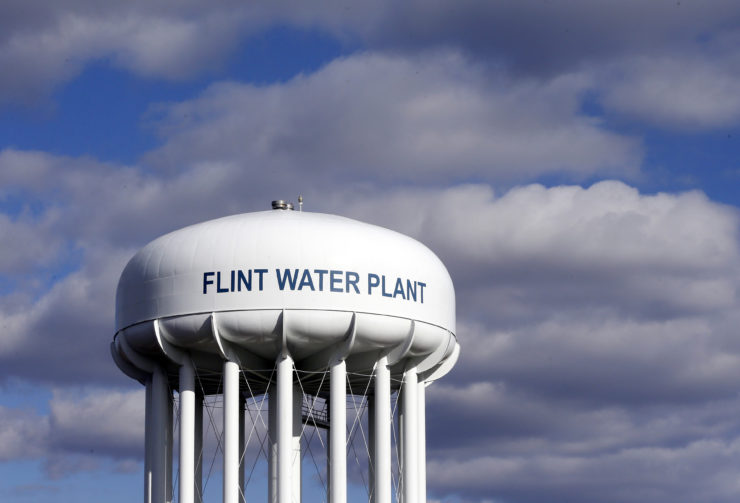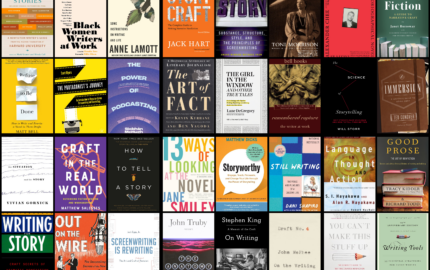The tap water in Flint, Michigan, went bad more than four years ago, when the budget-strapped city stopped drawing its water from Lake Huron and the Detroit River and switched to a cheaper source: the Flint River. The story of why, how and what happened next is tangled in politics and money, claims and counterclaims. But the summary is that more than 100,000 residents were left with lead-contaminated water, a range of illnesses, and at least 12 related deaths.

It took two more years and a class action lawsuit before government officials declared a state of emergency and starting distributing bottled water. A third year passed before there was an agreement to replace some of the toxic pipes. And while the water has now been deemed safe to drink, suspicions run deep. Meanwhile, public funding for free bottled water ended this past April, leaving residents to trust assurances that proved flimsy in the past, or to fend for themselves.
The water crisis in Flint became an environmental bellwether, prompting investigations of failed infrastructure and failed oversight throughout the U.S., especially in poor and minority communities. It also exposed challenges for journalists covering those communities:
- Reporting from and about a place that, in the contraction of the news industry, lacks deep local journalistic resources.
- Reporting stories that probed beyond the dramatic crisis headlines.
- Reporting stories told by official sources versus the stories of those in the community.
“The narrative for Flint was written by someone else, and they wrote it as a tragedy,” said Debra Furr-Holden, a public health professor at Michigan State University. “Nobody is telling the story of what makes Flint so resilient. It’s a story that needs to be told out of the mouths of the people who are living it.”
Furr-Holden was among traditional and advocacy journalists, community activists and social science researchers who gathered in early Ocober at the 28th annual conference of the Society of Environmental Journalists. The host site for the conference was the University of Michigan-Flint, which put lessons from coverage of the Flint water crisis in the spotlight. Those lessons were wide-ranging, and reflected the perspectives of individuals who viewed the issue through a particular lens. Taken as a whole, the big lesson might be that no single lens is wide enough.
The national story of the Flint water crisis focused on heroes, especially those in power and those who are often white, according to community activist Melissa Mays. Mays told a counter-narrative of a group of local women, in their 70s, who came together to share information about water chemistry. “The regular residents who are fighting are the heroes,” Mays said. Reporting those stories can show other communities how they can take initiative and solve their own problems.
Race was a likely barrier to the voices of residents of Flint, which is almost 60 percent African America, according to Curt Guyette, an investigative reporter for the American Civil Liberties Union. Guyette was named Journalist of the Year in 2016 by the Michigan Press Association for his coverage of the Flint water crisis. To do that coverage, he sought out local residents who were stand-out voices at grassroot protests. According to activists like Mays, Guyette’s work was laudable because rather than stop with quick interviews from those events, he would gather names and then circle back to talk at length with locals residents in their homes. Guyette noted that stories told from the ground level may not provide the "clean narrative" many journalists look for: “It’s a messy narrative, and part of your job is convincing your editor that there isn’t just one protagonist. There are many.”

Another perspective about sourcing came from Tawana Petty, who edits Riverwise, an alternative online and glossy print magazine that relies on community voices to tell stories. Petty’s take: If traditional training points journalists to government officials as the most reliable sources, then journalists without that training may have an advantage. Empathy is the key, says Petty, who also works for the Detroit Community Allied Media Project: “How would you want this story told if it were your own family, your own community?”
A cautionary note was offered by Ron Fonger, a reporter for The Flint Journal, which is part of the MLive network of Michigan-based news organizations: Journalists have to be just as critical of grassroots sources as they are of official sources. Fonger was named Journalist of the Year in 2016 by the Detroit chapter of the Society of Professional Journalists and has been praised for tapping a range of sources for his coverage of the Flint crisis.
Where do journalists find those grassroots voices?
- Follow up with people after meeting them in traditional venues, as Guyette did.
- Broaden the scope of your source list, as Fonger did. Be conscious of who is and isn’t included.
- Use community activists like Mays to connect you with additional sources.
- Use social media to reach people with first-hand experience of the issues, says Terry Parris Jr., engagement editor at ProPublica.
- Include requests and contact information at the bottom of short, newsy stories seeking additional sources. That’s how Anna Smith, a reporter for High Country News, says she found dozens of sources to help her investigate sexual harassment in the Bureau of Indian Affairs.
- Drive around the community you thought you knew. Attend events outside your usual circle. Jiquanda Johnson, publisher and editor of Flint Beat, a local news site, says that even though she grew up in Flint, she makes an effort to see new places and talk with new people. She attends meetings she’s not covering just to hear new perspectives.
“It takes a little more effort to find those voices beyond the public officials,” Johnson said. “But if you want to be good at what you do, you have to go a little further.”



